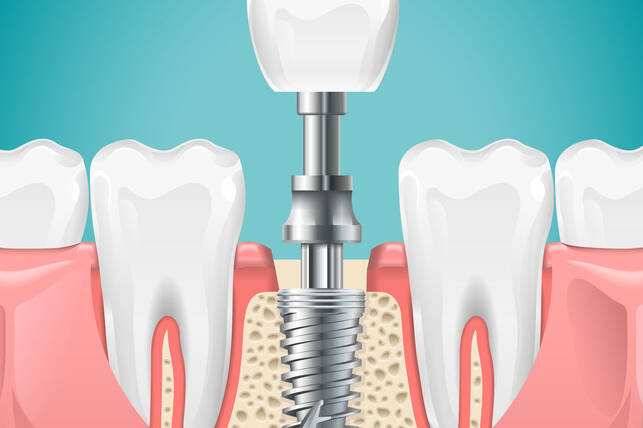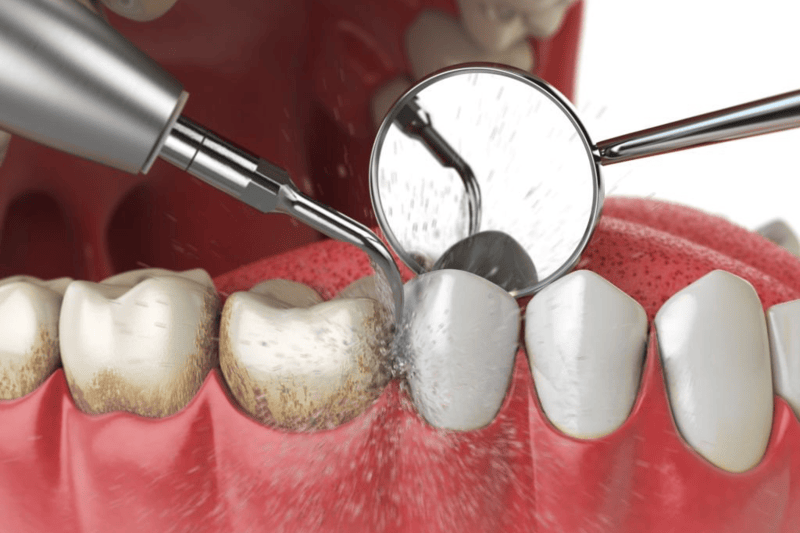Tooth Fillings
At Allwood Dental, we’re here to help if you have tooth damage or decay that needs attention. Addressing damage or decay early can prevent it from worsening and reduce the risk of needing a root canal or extraction. The most common type of decay is a cavity, which we effectively treat with composite fillings that blend naturally with your teeth, restoring both function and appearance. Let Allwood Dental assist you in restoring your teeth with seamless, high-quality composite fillings!
How We Treat
To treat a cavity, your dentist will first numb the area with local anesthesia. Then, a dental drill removes the decayed portion, and the cavity is thoroughly cleaned to clear out bacteria and debris. If the decay is near the tooth root, a liner—such as glass ionomer or calcium hydroxide—may be applied to protect the nerve. Once the filling is in place, your dentist will finish and polish it for a smooth, natural look.
We offer various filling materials, including composite resin, silver amalgam, and glass ionomer (a glass-particle material similar to composite). Composite resin (or white colored fillings) are usually the fillings of choice. Your dentist will recommend the best option based on the decay’s location, your budget, and insurance coverage.
Book Appointment
Our Testimonials
Alisha Dhunna
“ Every time I visit, they give me proper attention and advice. I adore how they listen to your dental problems calmly and patiently, providing you with excellent guidance. Dr. Hans and her team are doing a wonderful job. Thank you for our care. ”
Jasbir Hundal
“ Dr. Hans and her staff are very attentive and caring. They explained the procedures thoroughly and made sure I was comfortable throughout the process. ”
Carole Warren
“ Dr. Hans is so kind and patient, an excellent Denist who will take time, think, and do the work correctly. I highly recommend her! She really cares about you. ”
Macleod Tara
“ So I needed a dentist, as a filling fell out. So I went on Google and looked at the reviews.
I’m so thankful I picked Allwood, friendly atmosphere, clean. The wonderful dentist let me know everything she was doing, she made me feel calm, and in a safe place. Her assistant was just as lovely. I’m definitely going back, we’re going to create a plan. Thank you ladies, for a really great experience. ”
Joe C.
“ This place was very good. I got a very friendly greeting when I walked in and I was put at ease. The dentist was gentle and attentive and took the time to honestly answer all of my questions. All of the staff were pleasant and made me feel very comfortable. ”
Debbie Tait
“ This entire office has eliminated my fears of going to the dentist regularly. Things are always explained clearly so the right decision is reached. Everyone has been beyond patient with me! ”
Types of Dental Fillings
01
Silver Fillings (Amalgams)
Amalgam is the most widely used and trusted material for tooth restoration, consisting of mercury mixed with Silver, Tin, Zinc, and Copper, which provides high strength and durability due to its metallic properties. Despite its good properties, the use of amalgam has been restricted due to its silver color and mercury composition. However, in difficult cases, amalgam remains the best material for dental protection in terms of physical properties.
Advantages of amalgam fillings include their durability, as they can last at least 10 to 15 years and usually outlast composite fillings, their strength in withstanding chewing forces, and their potential lower cost compared to composite fillings.
02
Tooth – colored composites
At our office, we use composite resin, or white fillings, to restore both the function and appearance of your teeth. These fillings blend seamlessly with your natural tooth color, providing a whiter, brighter smile and even replacing old metal fillings for a fresh look. Benefits of white fillings include their ability to match tooth color, bond well to teeth, and require minimal tooth removal. Though they may wear out sooner and take slightly longer to place than amalgam, their aesthetic appeal and functionality make them an excellent choice for many dental repairs.
03
Glass ionomer
Glass ionomer is composed of acrylic and a distinct glass material, commonly utilized for fillings in young children and below the gum line, although drilling is still necessary. It releases fluoride, which can prevent tooth decay.
Nevertheless, this material is less robust than composite resin, and it is more vulnerable to wear and prone to breaking. Glass ionomer is typically similarly priced to composite resin.
Frequently Asked Questions
There are two main steps involved in creating a dental filling. Firstly, the dentist will remove all dead and decaying material from the broken tooth, which is comprised of enamel that cannot be saved. This step is necessary to ensure the secure insertion of the replacement filling. The dentist will administer an anesthetic to ensure that the patient does not feel any discomfort during the procedure.
It is important to note that getting a filling should not cause any pain, though the sensation of the drill may feel unusual. The drill is used to remove the decaying portions of the tooth, following which the dentist will clean out the cavity thoroughly to remove all bacteria and debris.
In cases where the decay has spread extensively and the root is close to the surface, the dentist may opt to insert a dental liner made of either glass ionomer or composite resin. This liner protects the nerve and ensures it does not become exposed. The filling is then inserted on top, and the entire tooth is cleaned and polished. For tooth-colored fillings, a special tool is used to harden the different layers.
Taking care of fillings is easy, and it’s important to keep up with your regular dental care routine to ensure their longevity. This means brushing and flossing twice a day, attending regular dental check-ups, and promptly informing your dentist about any changes.
Over time, fillings can degrade and require replacement. If you experience sensitivity, sharp pains, or notice jagged edges or cracks in the filling, it’s likely that it needs to be repaired or replaced.
To determine the best solution, your dentist will x-ray your mouth and confirm the most suitable course of action. Typically, degraded material will need to be removed and replaced with a new filling of the same type. It may also be possible to upgrade to a better filling material, but this option should be discussed with your Allwood Dental dentist in Abbotsford.
After getting a filling, it’s common to experience increased sensitivity for the next two to three weeks. Although, the discomfort will gradually decrease over time. If the tooth sensitivity is causing pain while chewing or talking, taking over-the-counter painkillers can help manage the sensation. However, most patients don’t require painkillers as the discomfort is mild and temporary. You can avoid triggers like extremely hot or cold substances and use desensitizing toothpaste to control the discomfort. Make sure to keep an eye on any pain symptoms and report them to your dentist promptly. Custom fillings require skill and sometimes require follow-up repairs or alterations. If pain and sensitivity persist beyond what is expected, your dentist may need to make changes to the filling. While this can be frustrating, it’s necessary for creating a long-lasting filling that can serve you well for a decade or more.









